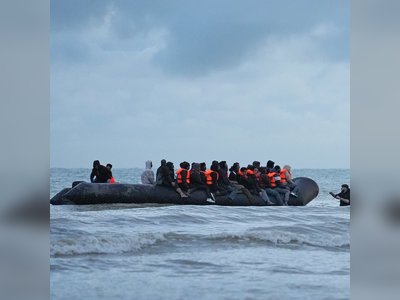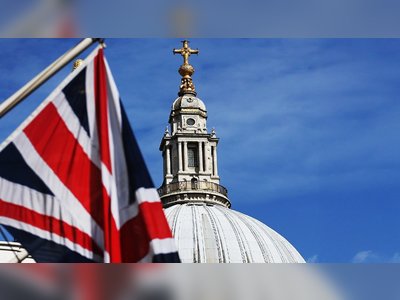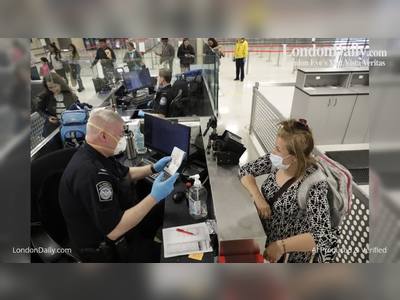
Bahamas well situated to handle Dorian aftermath- Standard & Poor’s
International credit ratings agency Standard & Poor’s (S&P) says the Bahamas may actually be able to recover from the catastrophic Hurricane Dorian without too much economic fallout.
It said in a recent bulletin that early signs suggest the country is well positioned to handle the fallout, emerging without any “meaningful deterioration in … the economy, fiscal performance, debt burden and external assessment.” It added that Dorian’s long-term impact on credit quality could be limited, particularly if the government responds in a timely manner to various challenges.
That is the case, S&P said, although the Category 5 hurricane last month devastated Abaco and Grand Bahama in the northern part of the Bahamas, which account for 15-20 per cent of gross domestic product (GDP).
“Despite the significant damage to Abaco and Grand Bahama, several factors suggest that the long-term effects of the hurricane on the Bahamas’ credit quality could be limited,” it said, pointing to the fact that the hurricane struck outside of peak tourist season, and the physical damage was concentrated on two islands that together attract only about 20 per cent of tourists.
“Other destinations within the country, including Nassau, the capital and economic centre, were unaffected. Furthermore, before the hurricane, the country had been on track to achieve good GDP growth in 2019, slightly exceeding our forecast. The government also recently reported a relatively strong fiscal performance in 2019 (year ended June 30). Based on the information currently available, the timing and location of the hurricane’s impact, and the country’s relatively strong economic and fiscal performance year to date, it is possible that Dorian may not lead to a meaningful deterioration in the Bahamas’ economy, fiscal performance, debt burden and external assessment.”
The assessment came on the heels of a Central Bank of the Bahamas prediction that the economy will resume healthy economic growth in 2021, following a potential Dorian-induced contraction next year as rebuilding gathers pace.
Despite the optimism, S&P did note that the Bahamas’ economic growth and fiscal discipline have become extremely vulnerable to weather-related disasters.
“This event highlights the importance of considering environmental factors in our analysis of the Bahamas, given its location in the Atlantic hurricane belt, and the large geographic dispersion of its 700 islands over almost 14,000 square kilometres,” the ratings agency said.
“In the past five years, the Bahamas has been affected by at least four other serious hurricanes. We believe this elevated environmental risk has contributed to below-average growth for the Bahamas, when compared with peers with similar GDP per capita. The Bahamas has taken steps to mitigate the risks related to increasingly frequent climate disasters by strengthening its public finances, planning for these events, and obtaining insurance. Despite these efforts, vulnerability to natural disasters continues to affect the country’s creditworthiness.”
S&P said it would continue to follow the developments and pace of recovery efforts, including the government’s ability to respond effectively to the many challenges of recovery.
“We will focus particularly on the implications for long-term economic growth, government finances, debt burden and the country’s external position. We could lower the rating if we come to expect that public finances deteriorate compared with medium-term expectations, either because of the fiscal impact of the hurricane or weakened political commitment to fiscal sustainability.”
That is the case, S&P said, although the Category 5 hurricane last month devastated Abaco and Grand Bahama in the northern part of the Bahamas, which account for 15-20 per cent of gross domestic product (GDP).
“Despite the significant damage to Abaco and Grand Bahama, several factors suggest that the long-term effects of the hurricane on the Bahamas’ credit quality could be limited,” it said, pointing to the fact that the hurricane struck outside of peak tourist season, and the physical damage was concentrated on two islands that together attract only about 20 per cent of tourists.
“Other destinations within the country, including Nassau, the capital and economic centre, were unaffected. Furthermore, before the hurricane, the country had been on track to achieve good GDP growth in 2019, slightly exceeding our forecast. The government also recently reported a relatively strong fiscal performance in 2019 (year ended June 30). Based on the information currently available, the timing and location of the hurricane’s impact, and the country’s relatively strong economic and fiscal performance year to date, it is possible that Dorian may not lead to a meaningful deterioration in the Bahamas’ economy, fiscal performance, debt burden and external assessment.”
The assessment came on the heels of a Central Bank of the Bahamas prediction that the economy will resume healthy economic growth in 2021, following a potential Dorian-induced contraction next year as rebuilding gathers pace.
Despite the optimism, S&P did note that the Bahamas’ economic growth and fiscal discipline have become extremely vulnerable to weather-related disasters.
“This event highlights the importance of considering environmental factors in our analysis of the Bahamas, given its location in the Atlantic hurricane belt, and the large geographic dispersion of its 700 islands over almost 14,000 square kilometres,” the ratings agency said.
“In the past five years, the Bahamas has been affected by at least four other serious hurricanes. We believe this elevated environmental risk has contributed to below-average growth for the Bahamas, when compared with peers with similar GDP per capita. The Bahamas has taken steps to mitigate the risks related to increasingly frequent climate disasters by strengthening its public finances, planning for these events, and obtaining insurance. Despite these efforts, vulnerability to natural disasters continues to affect the country’s creditworthiness.”
S&P said it would continue to follow the developments and pace of recovery efforts, including the government’s ability to respond effectively to the many challenges of recovery.
“We will focus particularly on the implications for long-term economic growth, government finances, debt burden and the country’s external position. We could lower the rating if we come to expect that public finances deteriorate compared with medium-term expectations, either because of the fiscal impact of the hurricane or weakened political commitment to fiscal sustainability.”











